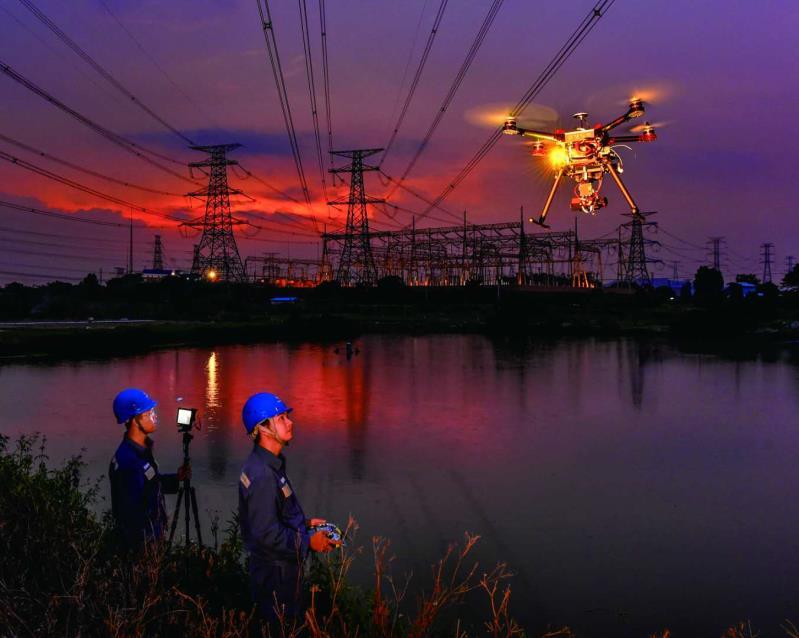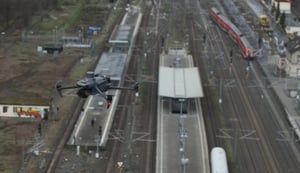222,000 kilometers of powerline meanders across 5 provinces of China’s rich southern territories, spanning one million square kilometers and servicing a population base of more than 254 million people and 87.4 million households. China Southern Power Grid Co., Ltd., (i.e. CSG) operates and manages the powerline networks with a total length longer than the equator of the earth*.
*The length of the equator is 40075.02 km.
Performing regular inspection of the network requires huge investment of resources, from manpower, equipment, to management. In 2015, CSG’s inspection covered 11,000 km, depending heavily on traditional methods including manned helicopters. This was short of a quarter of the total length of its powerline networks.
How to improve inspection efficiency and scale out the operations? That is a question solved by CSG with unparalleled technology innovations. Starting from 2018, the inspection fleet is able to cover over 241,000 km of powerlines, 15 times its capability in 2015. What made the exponential increase of efficiency in 3 short years?

Early Adoption of New Technology
CSG has always been on the frontier of exploring new technologies. Back in 2009, it was one of the first power grid companies to invest large in helicopter inspection. Aerial insights from the sky not only made it possible to cover large distances in short time, but also kept workers safe from having to travel in remote, dangerous areas. But the cost was high, and it was difficult to scale out as manned helicopters are expensive to use and to maintain.
Shortly after in 2012, CSG started testing the potentials of unmanned aerial vehicles, aka drones. It deployed drones in 9 cities for powerline inspection, and soon saw its value. With much smaller cost, drones performed high quality outcomes. Drones were easier for inspectors to operate and to carry around to remote areas, while delivering detailed inspection results the same quality as manned helicopters. The much lower cost in comparison with helicopters made it possible for more inspectors to use it as a regular tool.
The value of drones soon brought a big step forward. In 2015, CSG already had a drone operations team with 387 units of aircrafts and 36 certified pilots. One pilot with one drone can perform the inspection a person could do in 3 days with traditional methods.
With such a drone fleet, there came the next question: how to use these drones at scale?

The Perfect Mixture of Different Drones
Covering 11,000 km powerlines in a year was a huge step forward from the past. However, it was far from the goal of CSG. The company manages 45,550 kilometers of powerline in China’s rich south where safety and consistency of the power supply is critical.
Scale out the operations. This was the call from CSG’s management center. The company founded its own technology innovation center in 2018, researching and developing scalable, intelligent ways to leverage the new tech they’ve gotten familiar with over the years of practices.
The drone fleet of CSG had both fixed wings and multi-rotor drones. Researchers quickly realized the pros and cons of both. Fixed wings had longer flight time which showed greater capabilities in covering longer distances with a single flight, while multi-rotors were able to capture detailed aerial imagery with more flexible and controllable flight modes. There came the perfect mixture, and the perfect combination.
Fixed wings were sent on long distance corridor flight missions, bringing back high-precision point-cloud data that were processed and made into route models. Inspectors could then set up points of interest on the models and send out Multi-rotor drones on automatic missions to inspect the areas of key assets. This was only the first step of CSG’s scalable innovations.
Intelligent Machines at Work
2018 was a year of intelligence explosion for CSG. First, the route planning was made more accurate with new laser capabilities of their drones, making it standard operation to build 3D models of the target route. This made it possible for multi-rotor drones such as the DJI Matrice 200 to perform completely auto-pilot inspections along the route, capable of inspecting 36 towers with 3 landing points with minimum human interference.
Artificial intelligence was also integrated into the operations. With intelligent visual recognition algorithms, drones were able to send back real-time visions with identification of components. Inspectors could see the clear imagery with sign tags of components such as glass insulators and link fittings from several kilometers away on their controller screen.
The deep machine learning also “taught” drones to recognize defects of these components, sending alerts to inspectors instantly. The recognition rate of armor clamp pin missing is as high as 77%. The highly precise defect recognition mechanism cut response time by at least 80%.

Real-time identification of components

Intelligent defects recognition
A New Generation of Work
While the research and innovation continues at the CSG technology innovation center, the company is currently managing one of the most advanced, automatic drone fleets with intelligent capabilities at scale.
To date, CSG’s drone operations team has more than 6000 units of DJI drones, 900 certified pilots with 28 dedicated operations officers at its drone deployment center. With new development of drone technology, for example RTK integration, there is more potential being explored, experimented and leveraged at scale.
DJI continues collaborating with enterprise users to transform the way the world works with drone technology integration, R&D and technical support. Our vision is to foster a commercial drone ecosystem for businesses across industries to empower individuals, enhance jobs and digitize operations.





